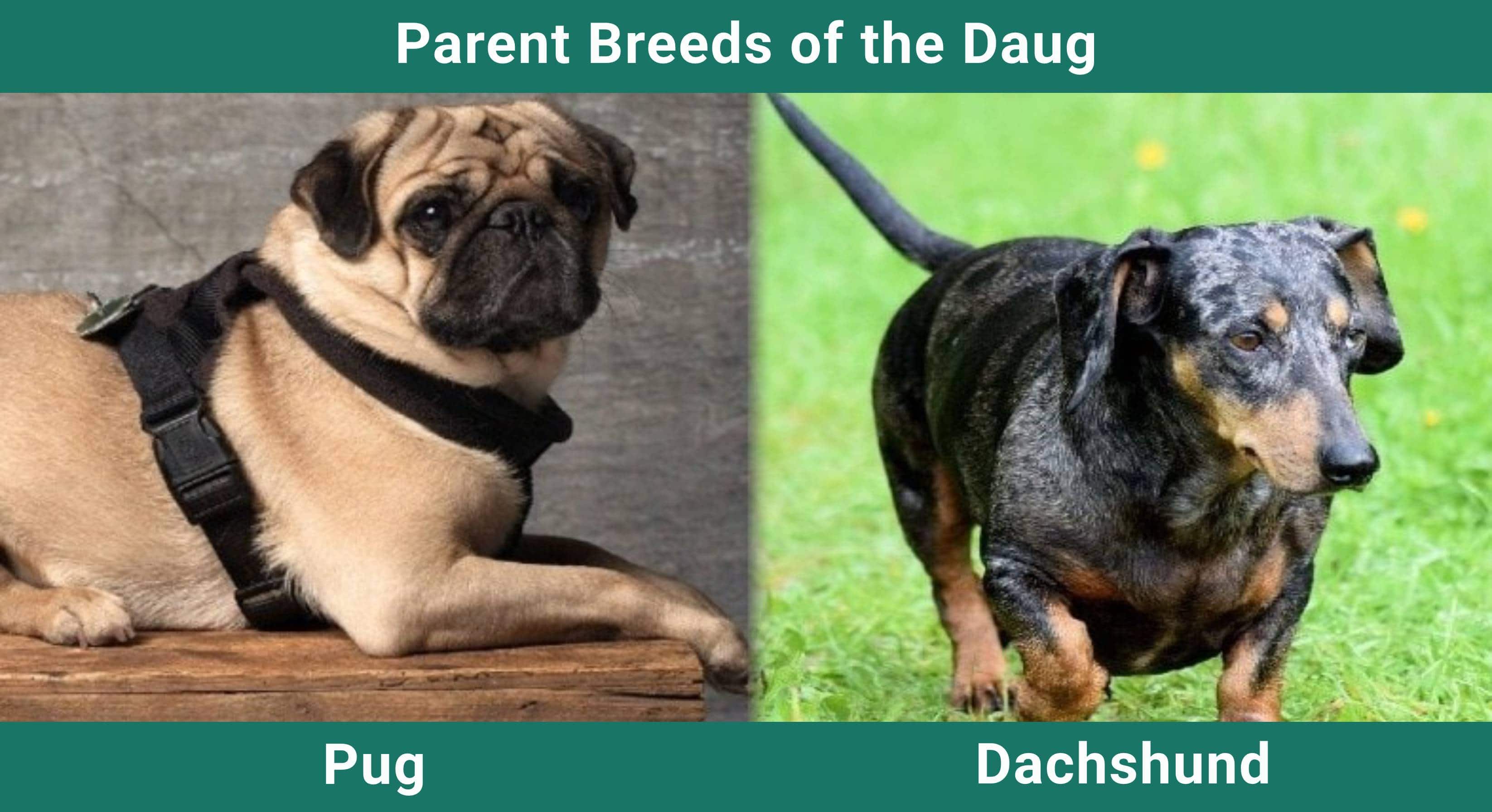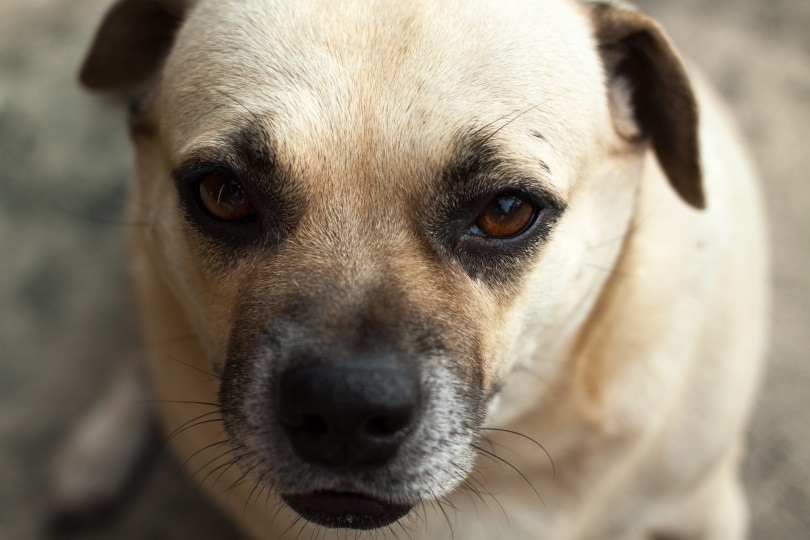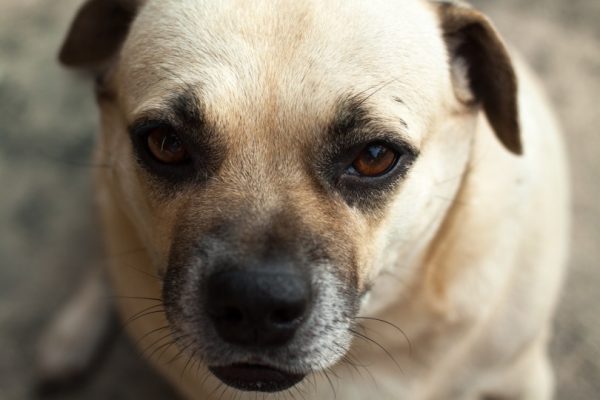Click Below to Skip Ahead
Laidback and affectionate, the Daug is often advertised as the perfect family pet. As a mixed breed between a Dachshund and Pug, there is quite a bit of variety between these dogs. You never exactly know what kind of dog you’re going to get since they can technically inherit any trait from either parent. That is the game you play when you adopt a mixed breed.
However, because both the Dachshund and Pug make pretty good family dogs, the Daug usually does as well. They are typically healthier than either of their parents, which is great for those who are looking to lower their vet bills. If you love the Pug but don’t love its slew of health problems, the Daug can be a good compromise.
Breed Overview
Height
11 – 13 inches
Weight
15 – 20 pounds
Lifespan
12 – 15 years
Colors
Black, fawn, brown
Suitable for
Laidback families, those looking for a relaxed dog
Temperament
Affectionate, People-Oriented, Low-Maintenance
Usually, these dogs are under 20 pounds. Some of them can be rather muscular and stoat, while others are rather skinny. Many are not terribly energetic, but they will enjoy some light playtime. Instead, they prefer to spend time in their owner’s laps.
Overall, these dogs don’t require much advanced care or knowledge, so they can be suitable for first-time owners. Just be aware that some do have health problems, despite the fact that they’re often healthier than other breeds.
Daug Puppies
Mixed breeds usually aren’t as common as purebred dogs. For this reason, it can be more difficult to find one. There just aren’t as many breeders that specialize in the Daug, so your choices for adoption are smaller.
Still, because these dogs can be prone to so many health problems, it is essential that you purchase them from a high-quality source. It is vital for any breeding dogs to be health tested, which helps ensure that the resulting puppies don’t inherit any preventable health problems.
The Daug is a relaxed dog, and low maintenance so will suit you well if you are laid back. If you want to be able to cuddle your pup then you will love this breed as they’re quite affectionate.

Temperament & Intelligence of the Daug
This breed was designed largely as a companion animal. Unlike other breeds, they weren’t designed for hunting, herding, or anything of that sort. Instead, they were simply bred to lay in their owner’s laps and be happy. This often means that they are great family dogs in most cases
Generally, this breed is extremely laidback and friendly. They’re often very people-oriented, so they will follow you around the house. Many bonds equally well with everyone in the family and typically don’t care who is giving them attention as long as they are getting attention. They aren’t as hyperactive as other small breeds and will spend much of their time lying around.
This is even more true for dogs with shorter snouts, as they may be unable to breathe properly. This will cause them to wear out faster than other dogs, which leads to more lying around.
Due to their extremely people-oriented nature, these dogs usually don’t like being left alone for long periods. They are not a good breed to get if you’ll be gone for much of the day. Instead, they do best when they are with someone for much of the time. They can have some separation anxiety problems, which can result in destructive behaviors.
These dogs may not be super friendly towards strangers, especially if they are not socialized correctly. They can be a bit unsure and may bark loudly at visitors. They also aren’t the most intelligent dog, so it takes quite a bit to train them. Patience is required, as it can take them a bit to catch onto new commands.
- Related Read: Do Pugs Make Good Pets? What You Need to Know!
Are These Dogs Good for Families? 👪
We recommend them for families with older children only. Smaller children can easily injure these dogs, which can lead to fear-based biting. Furthermore, these dogs aren’t always confident around children. Their smaller size often complicates matters since most hyperactive toddlers outweigh them. This can lead to fear-based biting, especially if the dog isn’t raised around children.
However, these dogs are great with older children. If they are treated gently, they are very affectionate and friendly. They will curl up with older children on the couch and follow them around the yard. They may not be best for very active families, as they don’t tend to be extremely active themselves. Some may be unable to exercise much due to their shorter snouts. They may be prone to exercise fatigue and heat exhaustion.
Therefore, we recommend them for families that aren’t necessarily looking for a dog to keep up with them. This canine will usually be much happier just laying in your lap.
Does This Breed Get Along with Other Pets? 🐶 😽
Yes. This dog usually gets along with other dogs, cats, and similar pets. They do not have a very high prey drive, so you usually don’t have to worry about them chasing cats. Plus, they aren’t much bigger than most cats, so you don’t have to be concerned about them really hurting the feline either.
They are usually just fine with other dogs. They will happily play with most other dogs as long as you socialize them properly from a young age. Sometimes, they can be a bit unsure and defensive. They aren’t exactly the most confident breed. They aren’t really territorial or anything of that sort, though, which is always a plus. Some simply socialization is all they need to get along with other dogs.
Because they usually have a small prey drive, they can be trusted with bunnies and other similar pets as long as they are supervised. You shouldn’t leave them alone with these pets, but it usually isn’t too difficult to keep them behaved.
Things to Know When Owning a Daug
Food & Diet Requirements 🦴
Because these dogs are small, they don’t eat very much. You won’t be spending much on their food each year, which may allow you to purchase more expensive food.
While they are prone to some health problems, many of these are not related to diet. Like all dogs, it is important to keep them at a healthy weight. Obesity can be particularly troublesome for this breed, as they are more prone to breathing difficulties. The extra weight can seriously cause problems. Measure the amount of food you want to feed your dog and be sure to watch their weight.
These dogs are known for not being super active, so the lack of exercise can put them at an even higher risk for obesity.
Some of these dogs are prone to food allergies. Therefore, you may need to be a bit careful about what you feed them. Dogs aren’t born with food allergies. They develop after the dog eats the same protein for an extended period. The best way to avoid food allergies is to change your dog’s food often. Don’t feed them only chicken. Switch up their main source of protein.
Exercise 🐕
The Daug isn’t very active. They may be prone to exercise-induced health problems. Many have shortened faces, which can cause breathing problems. When you make a dog that already can’t breathe exercise too much, it can cause some serious issues.
Still, these dogs do need exercise. A short walk or two each day is required. These can be replaced by short play sessions. The key here is short. You should not force these dogs to exercise for extended periods. They should be allowed to rest often.
You should go out of your way to encourage play, though. These dogs are prone to being quite lazy, which can lead to obesity. While they don’t need very much exercise, they do need to move at least a little bit each day. Obesity should be avoided at all costs, as these dogs are already prone to enough health problems. The addition of obesity can make them extremely unhealthy.
Training 🎾
These dogs aren’t extremely intelligent. They also weren’t bred to listen to people or work closely alongside us. Therefore, they are usually more difficult to train. Luckily, they tend to be very well-behaved, so they often don’t require much training before they are suitable family dogs. They are usually well-mannered indoors and don’t cause many problems.
With that said, they do need quite a bit of socialization. They aren’t the most accepting of other dogs and strangers without socialization. They need to be introduced to many different dogs, people, and situations at a young age. This will help them be friendly and accepting when they are introduced to new people as adults.
Puppy classes are very good for this. They provide the opportunity for this dog to meet others in a safe and controlled environment. Often, puppy obedience classes are really about getting the dog socialized, with some extra training thrown in. Of course, the training portion can be helpful as well, especially if you’re new to dog ownership.
Grooming ✂️
Thanks to their short fur, these dogs do not require much grooming. They do shed quite a bit, though their shedding may be particularly bad during certain times of the year. We do recommend brushing them twice a week to reduce this fur loss. Otherwise, they can quickly cover your house with hair.
These brushing sessions will also remove dirt from their coat, elongating the time they can wait between baths. This also spreads around the natural oils in their fur, which can keep their coat and skin healthier.
These dogs do not need baths very much as all. We only recommend bathing them if they get physically dirty. Otherwise, they may need a bath every few months at the most. If they have wrinkles on their face, you will need to clean them regularly to prevent bacteria and moisture from building up. Dog wipes are often the best option for this.
Health and Conditions 🏥
Despite being a hybrid, the Daug isn’t particularly healthy. Both of their parents are prone to a variety of health problems, which this mixed breed can inherit as well. Of course, they do tend to be healthier than either of their parents. Many are still prone to a variety of health conditions, though.
In particular, these dogs are prone to brachycephalic syndrome. This condition occurs when the dog’s snout is very short, which compromises the bone structure in their face. This can make it difficult for them to breathe, as all the bones and facial muscles are shoved together.
Brachycephalic syndrome affects both the dog’s airway and its eyes. These dogs usually cannot breathe properly and have difficulty cooling themselves. This leaves them open to heat exhaustion and exercise-induced collapse. This condition is exactly why these canines are prone to snorting and coughing. They simply can’t breathe!
Due to their bone structure, these dogs often have eye problems as well. Their eyes tend to pop out of their heads, which causes all sorts of eye problems.
The Daug may be affected by the extreme brachycephalic syndrome, or they could hardly have it at all. It depends on the shape and size of their muzzle. Dogs with more of a snout will typically be affected less.
Cushing’s disease is possible with this breed. This condition is extremely common among Dachshunds and affects how their adrenal gland works. It makes it produce far too many hormones, which can make it seem like your dog is growing and aging too quickly. If it is caught early, this condition is treatable.
Intervertebral disk disease can occur in dogs with long backs. This condition occurs when the area within the spinal column becomes swollen, cutting off the nerves going to the lower body. Typically, dogs with long backs are more likely to develop this condition. It is usually caused by an injury, jumping, or some similar physical activity. Symptoms don’t show up right away, so it can be difficult to link them to a specific event.
Dogs with IVD will typically experience pain in their lower legs, followed by muscle weakness. Eventually, they will become paralyzed in their lower body, including their legs and bladder. Treatment for this condition includes crate rest and the occasional surgery. Surgery can be helpful for some canines, but it is expensive and does not always work.
- Skin infections
- Allergies
- Brachycephalic syndrome
- Cushing’s disease
- Intervertebral Disk Disease
Male vs. Female
There is no significant difference between the males and females of this breed. Males and females are about the same size and have the same temperament. Which gender you choose is largely one of personal preference.
Because this canine is so rare, it is often best to avoid getting attached to a specific gender. Being set on one gender may make it even more difficult for you to get the dog you want. Instead, it is in your best interest to be more open to what puppies are available.
3 Little-Known Facts About the Daug
1. They aren’t the healthiest.
Mixed breeds are typically healthier than purebred dogs. While this is the case with the Daug, both the Dachshund and Pug are prone to many health problems. For this reason, their puppies are usually unhealthier than most mixed breeds.
2. The Daug is quite rare.
Despite being the result of two rather common dogs, the Daug is a rare breed. There are not many breeders that produce them, which can complicate matters when you’re trying to adopt one. Your only option may be to find them at an animal shelter or rescue, but even this can be difficult.
3. They can get expensive.
Some of these dogs can cost up to as much as $3,000, with some dogs costing even more than that. This is because they are quite rare, so the demand is often higher than the supply. At the same time, they are unhealthy and can be difficult to breed. Breeders often perform many health tests on the parents and get the puppies a lot of medical care. This can add up.
Final Thoughts
The Daug is a companion breed through and through. They love to spend most of their time relaxing with their people and enjoying warm days lying in the sun. They aren’t terribly active and may be more prone to things like heat exhaustion, so it is crucial that they are not forced to exercise more than their little bodies can handle.
They do best in laidback families that simply want their canines to follow them around the house. This breed often can’t hike or keep up with their people as other breeds can.
This breed is best in homes with older children only – not younger children. Their small size makes it easy for them to become injured, which can cause fear-based biting. They are usually fine with other dogs and cats, especially if they are socialized properly.
In the end, these dogs can make great family pets as long as you understand their abilities and temperament. They are not a breed that is going to run around with children all day. Instead, they’ll prefer to curl up on the couch and relax.
Looking for more crossbreeds? We have lots of Dachshund Mixes and Pug Mixes for you to explore!
See Also:
- Cane Corso Pug Mix: Guide, Pictures, Care & More
- Pugmatian (Pug & Dalmatian Mix): Pictures, Guide, Info, & Care
Featured Image Credit: soundandpic66, Shutterstock













